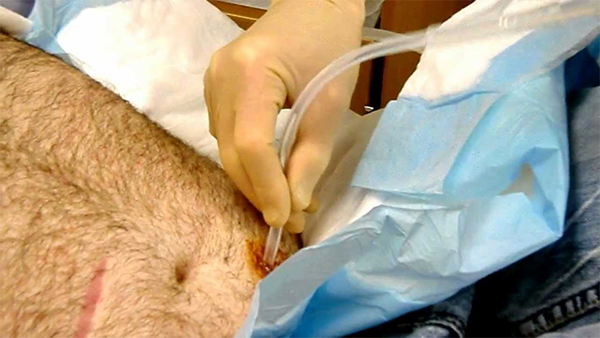<h4 style="text-align: justify;"><b>What is a Suprapubic Catheter?</b></h4>
<p style="text-align: justify;">A suprapubic catheter is a germ-free (germ-free) tube that drain urine out of your bladder. It is insert throughout a stoma (created opening) in your stomach and in to your bladder. Suprapubic means that the catheter goes into your body beyond your pubic bone. The catheter has a small balloon full with solution that holds the catheter within your bladder. These catheters are used while you have troubles urinating owing to a medical condition. A suprapubic catheter is also named an indwelling urinary catheter.</p>
<p style="text-align: justify;"><img class="aligncenter size-full wp-image-2075" alt="How To Care For Your Suprapubic Catheter" src="https://medusamagazine.com/wp-content/uploads/2016/06/How-To-Care-For-Your-Suprapubic-Catheter1.png" width="600" height="338" /></p>
<h4 style="text-align: justify;"><b>Suprapubic Catheter Irrigation</b></h4>
<h4 style="text-align: justify;"><b>What is a Congested Drainage Scheme for My Suprapubic Catheter?</b></h4>
<p style="text-align: justify;">The drainage scheme consists of your suprapubic catheter as well as a sterile urine drainage bag attach to the catheter. This form a pathway that goes from the tip of the catheter within your bladder to the urine bag. It is a congested drainage system while there are no leaks or disconnection. Your urinary system usually is sterile as well as a closed drainage system prevent germs from getting in to it. Your catheter must <b>constantly</b> be attached to other apparatus to form a congested drainage system.</p>
<h4 style="text-align: justify;"><b>Why is it Significant to Take Care of My Suprapubic Catheter as well as Drainage Bag Properly?</b></h4>
<p style="text-align: justify;">Urinary catheter-based infection are ordinary and could lead to severe illness plus death. An infection could be caused by bacteria (germs) that find inside the catheter or else drainage bag tubing while the drainage scheme is opened. This can occur while the urine bag is altered or while a urine sample is composed. You could also obtain a disease if the catheter apparatus is not clean well or else if you do not clean your hands. Actions that aid stop catheter-based infection include:</p>
<ul style="text-align: justify;">
<li><b>Drinking liquids:</b> Adults must drink regarding 9 to 13 cups of fluid each day. One cup is 8 ounces. Good choice of liquids for most populace comprise water, juice, plus milk. Coffee, soup, and fruit might be counted in your every day liquid amount. Ask your caregiver how much liquid you must drink each day.</li>
<li><b>Good hand washing is the finest way to stop infection.</b> constantly wash you hands with soap plus water before and after you touch your catheter, tubing, or else drainage bag. Do this to take away germs on your hands previous to you touch these substance. Do this after you stroke these items to take away germs that might have been on them. Wear clean medicinal gloves while you care for your catheter or else divide the drainage bag. This will aid stop germs from getting in to your catheter. Remind anybody who cares for your catheter or else drainage system to wash his or else her hands.</li>
</ul>
<p style="text-align: justify;"><b></b>This is also a type of indwelling catheter, however the procedure of inserting it is diverse. Instead of being insert via the urethra, this catheter is insert via a hole in the patient&#8217;s stomach. The catheter reach the bladder throughout this hole. The process requires use of epidural anesthesia, general anesthesia or local anesthesia</p>

How To Care For Your Suprapubic Catheter
